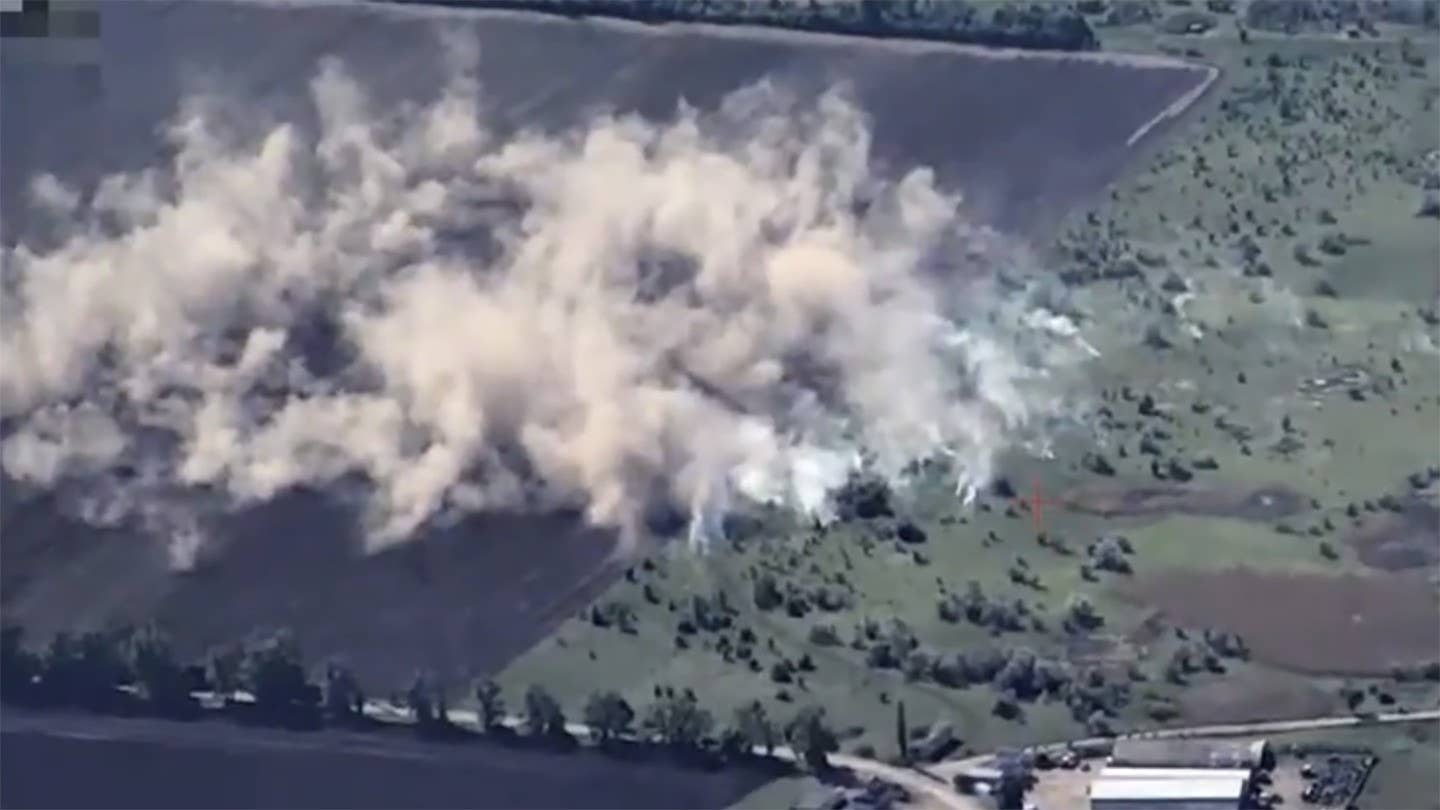ATACMS Volley Strikes Mass Of Russian Troops Training In Eastern Ukraine
In a little more than 90 seconds, four ATACMS hit a concentration of Russian troops reportedly preparing to attack in the Kharkiv area.

A new video emerged on social media showing an apparent cluster munition-laden Army Tactical Missile System (ATACMS) short-range ballistic attack on a mass of Russian troops and equipment in Eastern Ukraine's Luhansk Oblast. Drone video shows what appears to be a volley of four ATACMS striking over about 95 seconds on a Russian training and coordination center near the town of Kuban. That's located about 80 kilometers (50 miles) from Ukrainian lines.
The drone video opens with an overview of the area.
At the 37-second mark the surveillance drone zooms onto a concentration of Russian troops and at least three armored vehicles.
A little more than a minute later, what appears to be a dud or a spent dispenser landing in the general vicinity can be seen at the 3:50 mark.
The first of three explosions that blanket the area, showing the tell-tale plumes of smoke from the submunitions being scattered and detonating, can be seen at about the 4-minute mark.
A little less than 90 seconds later, another explosion can be seen a short distance away at the 5:24 mark.
That was quickly followed by another strike in the area about second later, which you can see a short distance from the building in the photo below.
Ukrainian Telegram channels and open source intelligence (OSINT) Twitter accounts speculated that dozens of Russian troops were killed in the attack, but The War Zone cannot independently verify that.
The first tranche of about 20 ATACMS short-range variants arrived in Ukraine in October and were apparently mostly used during attacks on Russian-held airfields the same month. Ukraine has been using the limited number of these prized weapons it has received to devastating effect. Longer-range variants, which were just introduced, were used in a wave of attacks on air bases and air defense installations across the Crimean peninsula early Tuesday morning, according to the Kyiv Post.
This strike was designed to hit Russian troops preparing for an attack on the Kharkiv region, one Ukrainian military analyst posited.
"Such strikes in the Luhansk region are crucial,” said Oleksandr Musiienko, the head of the Ukraine’s Center for Military-Legal Studies, according to the Ukrainian RBC media outlet. “It's precisely in the territory of the northeastern part of the Luhansk region that Russia has been training and coordinating its units, which were specifically preparing for an escalation of hostilities in the Kharkiv region, where Russia plans to reinforce its advance," explained Musiienko.
While Ukraine has recently concentrated ATACMS strikes on Crimea, Russian troops in the eastern part of Ukraine are not logistically dependent on the illegally occupied peninsula, requiring other targets to be hit.
"It's necessary to strike not only at Crimea, as the Russian troop formations in the East and in the Belgorod and Kursk regions are not dependent on the occupied Crimea,” Musiienko added. “Therefore, strikes specifically in the Luhansk region are extremely important.”.
The objective is to impede Russian advances.
"The goal is to slow down the enemy's offensive actions. Not allowing them to deploy into combat formations. While we await more advanced weaponry, it's crucial to use what we have, namely ATACMS, to strike the enemy in their rear and prevent them from advancing to the front line," he concluded.
Late last month, the Pentagon promised Ukraine an unspecified number of ATACMS, including longer-range variants that can hit targets up to about 186 miles away, as opposed to the short-range versions that can hit targets up to a distance of about 103 miles. Media reports said that longer-range variants had been in country since March.
It is unknown how many ATACMS, which come in both unitary and cluster warhead configurations, Ukraine has received. However, attacks in both Crimea and now Luhansk indicate that Ukraine feels it has enough to launch relatively large volleys over successive days.
How long these volleys will last, and how much they stem Russia’s increasing advancement across the front lines remains to be seen.
Contact the author: howard@thewarzone.com
